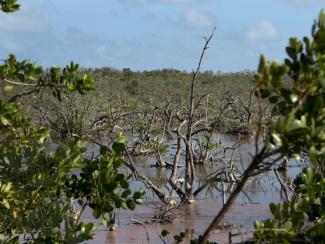
The bayous of New Orleans aren’t just picturesque; they can be treacherous. One wrong step and someone could get tangled up in vines or dragged down into the murky water. But those dangers made them safe places for maroon colonies to flourish.
Maroon colonies were a transformative space for enslaved Africans, serving as a halfway point between the shackles of enslavement and the elusive promise of true freedom. Maroons could carve out a semblance of autonomy and self-governance deep in the bayous like St. Malo.
These brave souls risked their lives to carve out a life on the fringes of society, beyond the reach of their former oppressors. Living off the land and relying on one another for support, they formed a tight-knit community bound by their shared struggle and resilience.
Despite constant danger, they insisted on living free. Maroonage was not simply a means of escaping slavery but a defiant act of resistance against the oppressive system that sought to exploit Black people’s bodies and crush their spirits.
The people in the maroon colonies drew their strength from each other. Their resolve to defy systems of oppression still stands as a testament to the power of unity especially when our freedom is at risk.